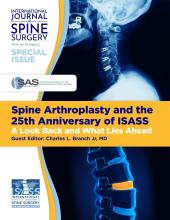ABSTRACT
Background The National Institute of Health and Clinical Excellence (NICE) provide a framework of evidence-based guidelines for the management of metastatic spinal cord compression (MSCC). We aimed to compare our center's provision of service to these best practice guidelines and discuss key shortcomings with their implications for the spinal surgeon.
Methods Patients with radiologic evidence of MSCC over a 30-month period were identified using the hospital electronic radiological database. A chart review was performed analyzing MSCC management.
Results Forty-one patients were identified. Pain was the most common presenting complaint, occurring in 76% of patients. Radiotherapy alone was the most common therapy employed (93% of patients). A surgical opinion was sought for 51% of patients. Histological diagnosis of the causative lesion occurred in 5 patients from surgical specimens.
Conclusions Incongruities between NICE guidelines and our practice exist. Early involvement of the spinal surgical services needs to be encouraged. Establishing a histological diagnosis of the spinal lesion should be seen as of therapeutic importance.
Footnotes
Disclosures and COI: There are no potential conflicts of interest to be disclosed by any of the authors, and a conflict of interest disclosure form has been completed by the corresponding author and is available on request. Local ethical board approval was not sought, as the Audit Department approved the process in accordance with establishing compliance with best practice. As such, informed consent was not necessary given the retrospective nature of the study. We the authors declare that we have full control of all primary data, and we agree to allow the journal to review the data if requested. No funding was obtained for this article.
- ©International Society for the Advancement of Spine Surgery







